Polar Vantage V3 review: a brilliant all-round smartwatch for a variety of sports
A great smartwatch for 150+ different sports with impressive biosensing technologies
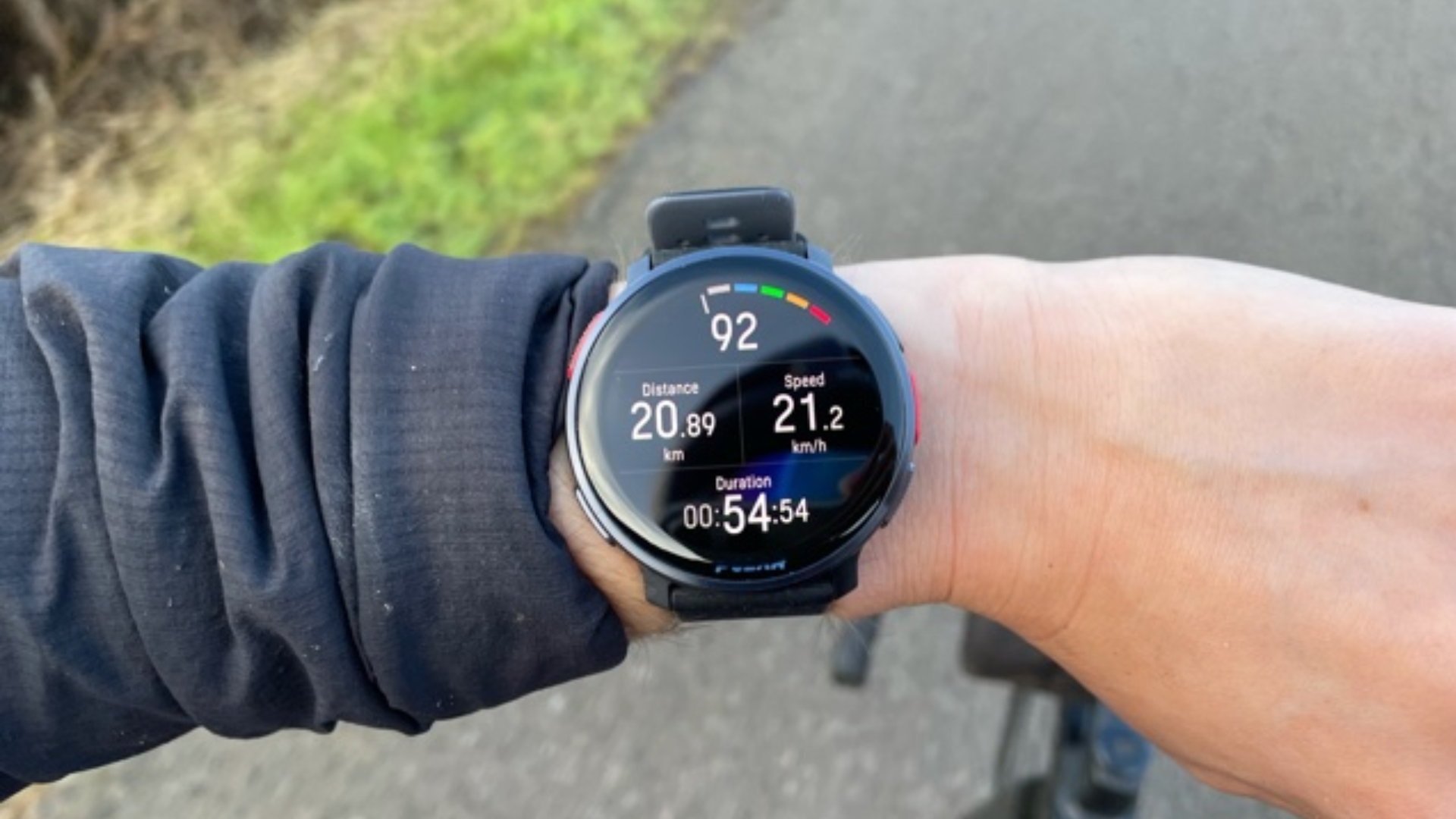
A very impressive smartwatch with more than enough features to track your training, sleep and health. Maybe even a few too many features for the average user, but if you are someone who loves data and wants to get the most out of your day to day life and training, then this is a great option for you.
-
+
Impressive battery life
-
+
Very clear display
-
+
Fast charging
-
+
Detailed downloadable maps with topography
-
+
Routes are very easy to follow
-
-
Could be too feature dense for some
-
-
ECG feature is not in replacement of a professional ECG
You can trust Cycling Weekly.
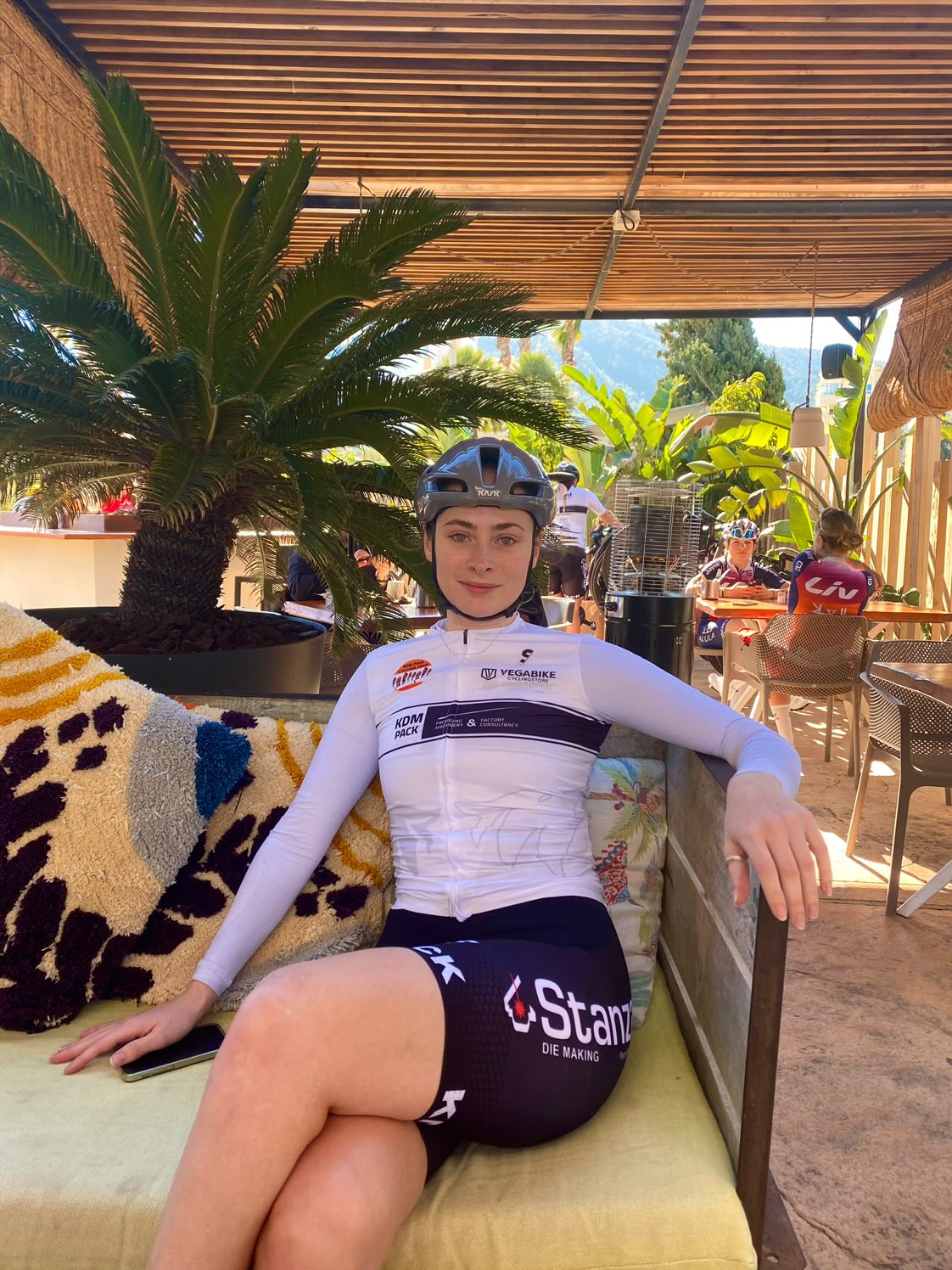
The Polar Vantage V3 smartwatch came onto the market this year as the successor of the well regarded Polar Vantage V2. Hoping to improve on the drawbacks of the V2, the brand new V3 has added features, such as maps and nightly skin temperature sensing, to improve functionality as well as track more aspects of your day-to-day health.
The same can be said for many of our best smartwatches for cycling list, but it’s important to remember that they aren’t solely made just for riding a bike. Which is exactly why I tested the V3 out in the gym, while walking and during running sessions - as well as when riding my bike, to enable a fully rounded opinion.
According to Polar, the watch comes “with an ensemble of biosensing instruments, AMOLED display, dual-frequency GPS, maps, and the most comprehensive suite of training and recovery tools on the market. Vantage V3 is the most powerful Polar to date.” So without further ado, let’s see if it lived up to the hype.
Polar Vantage V3: construction

Within the box, you’ll find the Polar Vantage V3 smartwatch (47 x 50.8 x 14.5 mm), Polar Silicone Wristband 22 mm (plus a shorter wristband for those with smaller wrists) and a Polar Charge 2.0 USB-C. Not to mention the instructions, which I would highly recommend reading.
Fresh out of the box, the display was the first element of the watch that really stood out to me: the face is nice and wide (1.39in/35.3mm ) and the AMOLED display is very bright. As someone who wears glasses, I found it to be really easy to read straight away.
The watch itself feels like a solid piece of equipment. The screen is made from Gorilla Glass with the bezel material being 'aerospace' aluminium. The minimum and maximum temperatures for the watch are -20°C - 50°C / -4°F - 122°F and is water resistant down to a depth of 50 metres - making it a great option for swimmers and scuba divers.
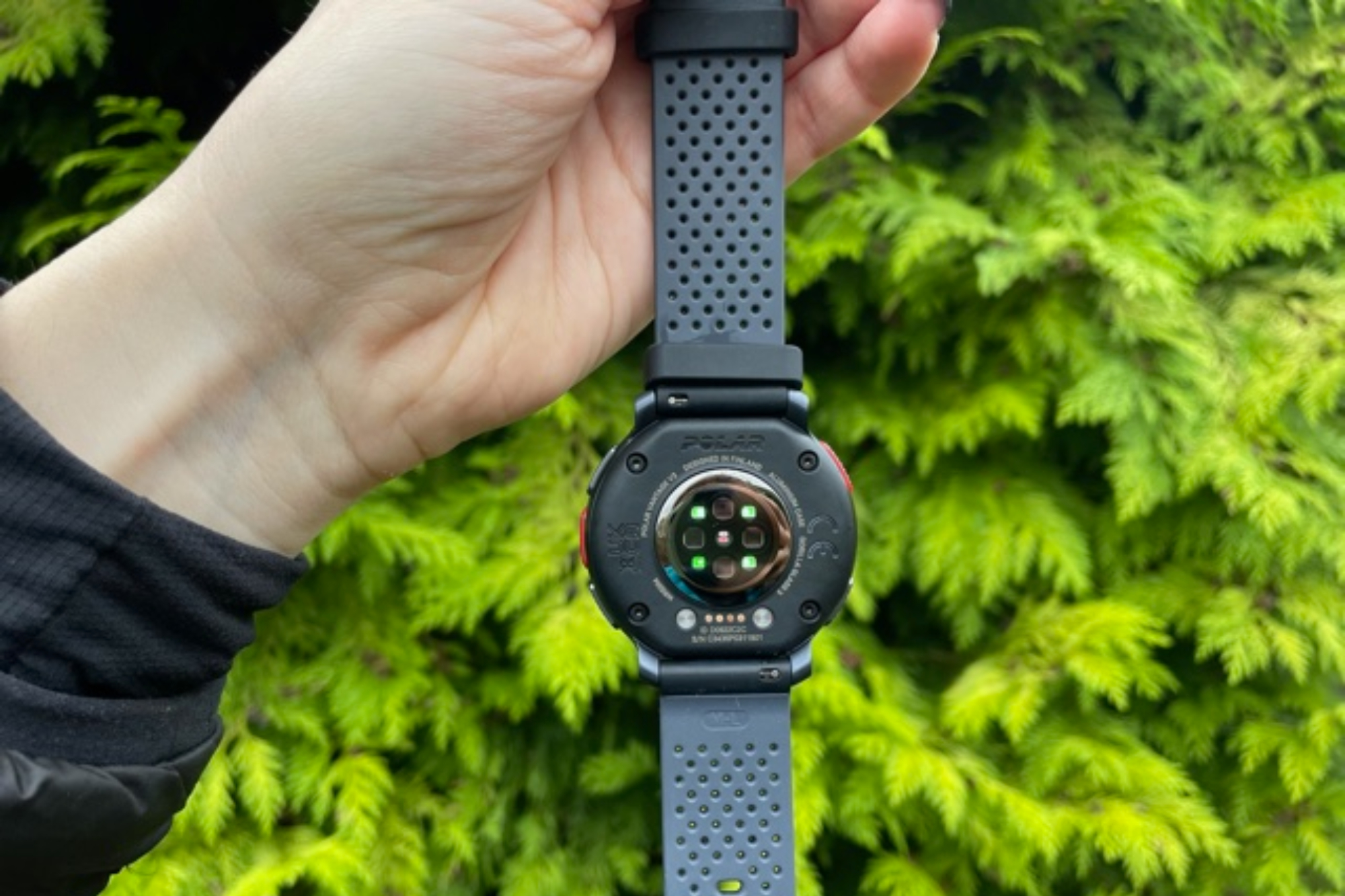
Altogether, this watch weighs in at 57g compared the V2’s 52g - which is a weight increase, but then the V3 does outdo the V2 in all aspects apart from the water resistance. The V2 was rated for a depth of down to 100m and, as mentioned, the V3 is capable of half that. Still, for the vast majority of people that trade off won't be an issue - and it most certainly wasn't for me.
Polar Vantage V3: the ride
Set up
During set up, I had to create a Polar Flow account to connect the watch to the app on my phone, which was easy enough. That said, the app wasn’t maybe the easiest to use at first and I did end up watching some tutorials on how to do certain things. But once I navigated it a couple of times, setting up certain features and linking to my Training Peaks and Strava was easy.
The set up itself was pretty straightforward and the box comes with some instructions on exactly how to set up the watch, which I found useful - especially as someone who wasn’t used to Polar smartwatches.
During set up, I appreciated the range of layouts as well as colours that I could select from for the main display. I felt that there was a decent amount of choice to suit any individual's needs or preferences.
Something else I noticed while setting the V3 up was the number of functions that I could swipe through from the home screen. This included my activity % with steps, my training recorded that week, sleep information, nightly skin temperature, cardioload status, training suggestions for the day, navigation, dawn-dusk timings, weather and music controls.
All in all, the set up was pretty straightforward and I didn't incur any major issues in doing so. This is mainly thanks to following the instructions provided as well as doing my own research if I got a little stuck or was unsure: which is mainly due to not being used to Polar watches.
Use during training

At first figuring out (or, more so, remembering) which of the five buttons did what when it came to recording and pausing my sessions was tricky. But once I got the hang of it I found using the watch during training great.
As previously mentioned, not only did I use the watch for riding but I also used it during my gym sessions and runs. Focusing mainly on the latter two. But I did use the watch when on my bike and looked to compare the heart rate features to that of my Wahoo Elemnt Roam computer and Garmin HRM-Dual heart rate monitor that I wore on my chest.
From that, I uploaded both files onto my training peaks and found that the information recorded by both did differ slightly. For starters, my heart rate as recorded by the V3 average was 112bpm and 143bpm max. Whereas my Garmin heart rate monitor recorded 113bpm average and 142bpm max. Of course this isn’t outrageously different and I did expect the watch to be much further off. Therefore, I think it did well in this case.
Then when it came to the speed that both recorded, it did once again differ. The average speed recorded by the watch was 22.45kph and the Wahoo recorded 23.05kph. So it’s clear to see that there’s not much in it, but I would say I’m inclined to side with the bike specific equipment when it comes to accuracy of a multi sport smartwatch. But, having said that, for a watch I was impressed with the readings when I used it on the bike because they were much closer than other watches I’ve used.
One issue I did find when it came to using it for cycling, which would put me off using a bike computer, is that it’s chunky. Of course, the big screen is great and you want to be able to easily view the info. But when it’s cold and you need to wear many layers, the bulkiness is noticeable and just means it doesn’t sit right under all of your clothes. Then getting the watch out to read is also annoying. Sure, I could’ve worn it on the outside, but it would’ve stopped the optical heart rate sensor from working and the recording of my health metrics.
With regards to using maps, the Vantage V3 does require maps to be uploaded prior to your first use. I downloaded the routes I wanted from Komoot onto Polar Flow, which was super easy, and then proceeded to follow the trail. I found this feature during running to be brilliant and very clear. I also liked that from my house the watch had the option to take me to the start of my route.
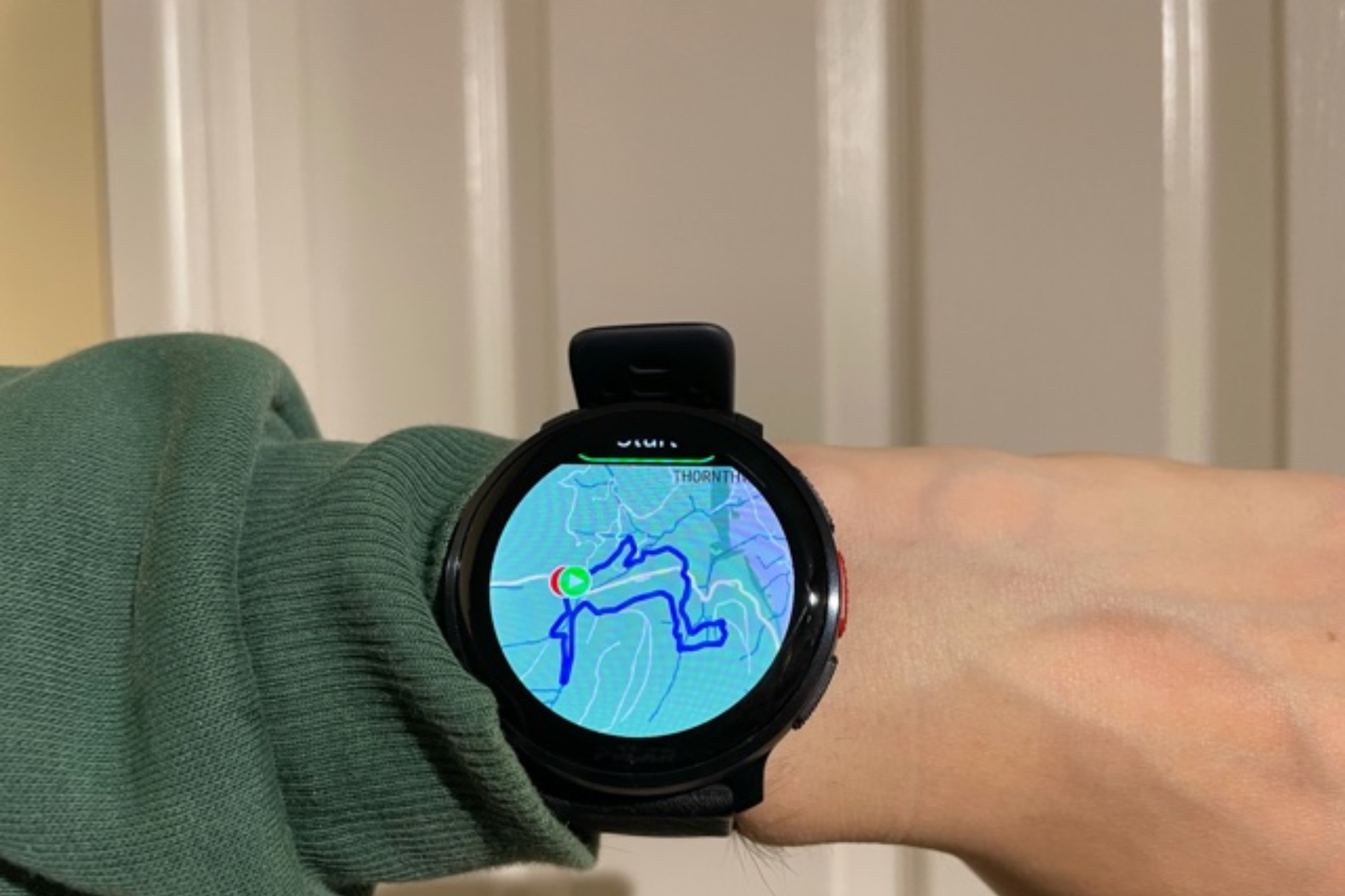
When the routes are planned using Komoot you also get the added advantage of turn by turn route guidance. Which is easy to follow and really useful if you are someone who needs the added prompt.
However, when using the routes I had downloaded, beforehand I understandably had to calibrate the GPS. At first I found this task to be really tricky and couldn’t get my head around the prompts the watch was giving me to do so. But it is one of those aspects that just needs practice and getting used to. Once set up, the GPS was great which is likely due to the Dual-Frequency GPS technology which helps mitigate interference from tall buildings etc.
Within the routes I had downloaded onto the watch, there was also the option to add carb and drink reminders, which I thought was a great idea for those who tend to forget. It may seem like an odd addition, but some people do really struggle with this so having reminders can really help.
When using both during running and while in the gym, I found the screen was really easy to read. I was especially impressed when out in bright sunshine that I could still clearly view the workout.
Everyday use
Of course, I wore the V3 as a watch for the vast majority of the review, therefore it would be wrong to not touch on how it was as a fancy smartwatch - and not just a training tool to be used when exercising.
Starting off with the comfort, I did feel that the watch was comfy to wear. Unlike some watches, it didn’t cause any friction or damage to my super sensitive skin. Therefore, I felt comfortable wearing the watch at all times, including when I slept.
Wearing the watch when I slept proved to be really useful when it came to the data. The watch, of course, tracked my heart rate like most smartwatches, but it also measured my skin temperature while I slept. As a tool for general health, it was interesting to see the variations in my temperature and it definitely helped me to recognise when I was becoming run down.
Another function I found pretty useful during the night was the flashlight. This feature can be accessed on the pull down option on the main clock display. Naturally, I could’ve just turned on the light, but it was useful when getting up to use the loo or find things in my car once I’d parked up.
I also thought the ECG feature was rather interesting, and I did have a go with it - but given that the feature literally comes with a warning which reads: “The Wrist-ECG sensor measurement feature is not intended for any medical use, diagnosis or treatment (including self-diagnosis or consultation with a doctor) and the data should not be used for any medical purposes.” I didn’t really see it as any real benefit. I would also like to add that I’d highly suggest everyone to get an ECG done professionally, yearly. Including those who are young and healthy.
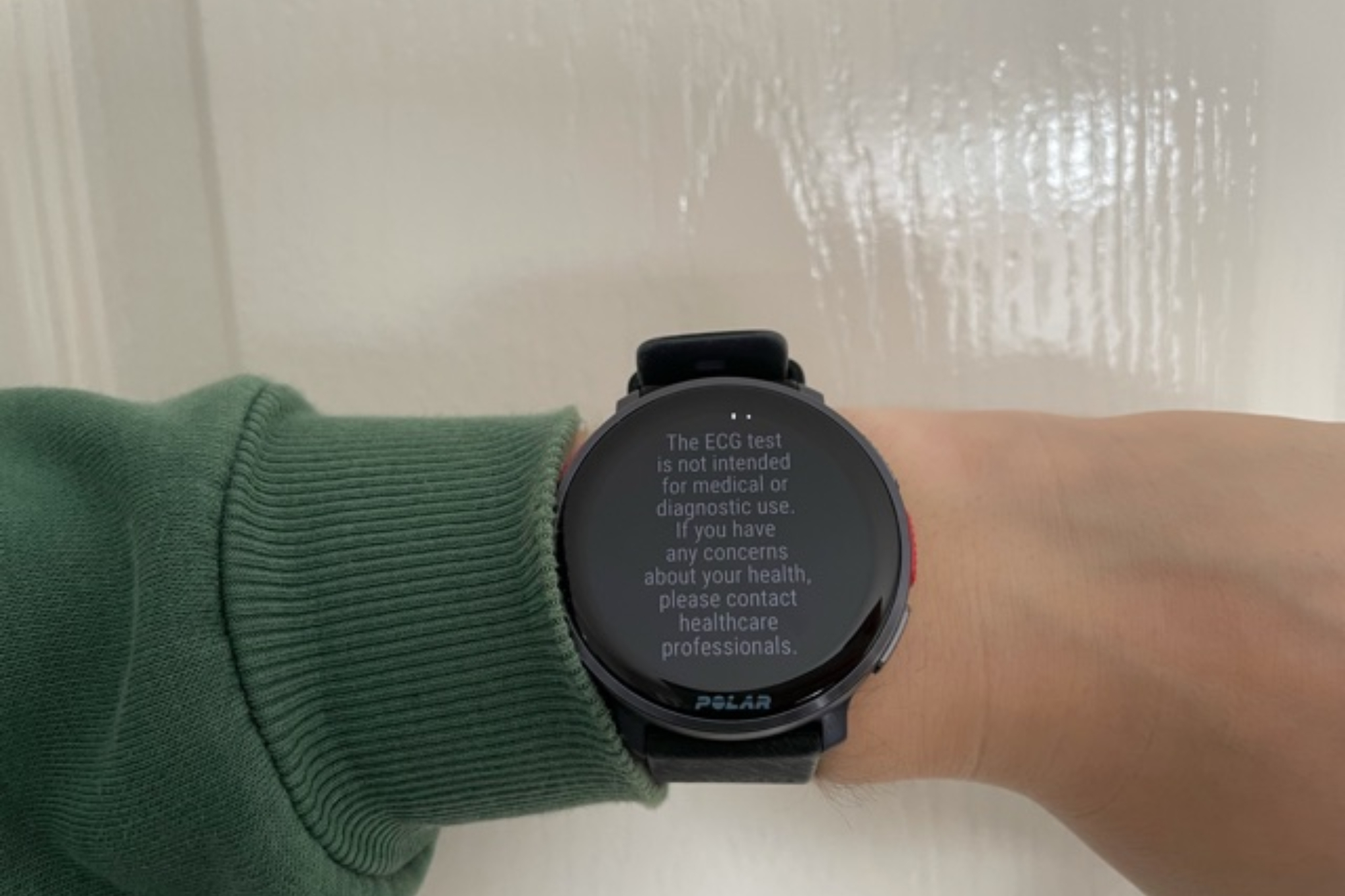
But where this watch was most impressive all-round has to be the battery life. Most weeks I could get through a whole 7 days without having to charge the watch. Then, when I did need to, I was also impressed with the speed at which the V3 could get up to a full charge. It really performs well where battery life is concerned.
Polar Vantage V3: value and conclusion
Overall, for all the features and accuracy, I feel the price point of $599.95 / £519.00, although expensive, is reasonable. Given the sheer range of features (most of which I either didn’t use or just couldn’t get into because this review would've been too long) is staggering. But, are they all needed for the vast majority of people? Potentially not, but having this many features is useful: rather have too many then too little.
When compared to other similar priced high-end smartwatches on the market, notably the Garmin Forerunner 955 Solar ($599.99 / £549.00 RRP) and the Garmin Forerunner 265 ($449.99 / £429.99), the Vantage V3 is very competitive with its range of features and biosensing technology.
However, as good as it seems, I am a little sceptical about some of the biosensing features. For example the ECG reading and SpO2 reading - I’m unsure how accurate they may be and without getting both readings done by a medical professional I can’t really comment on if the features are worthwhile or not. Given the warning that comes with the ECG reading, I feel that maybe it’s not the most reliable, but I could be wrong.
But if you are looking for a watch with all the bells and whistles for around the $600 / £500 mark, then I would highly recommend having a look at the Polar Vantage V3. It’s been a real joy to use and I’d definitely consider Polar products in the future because of this watch.
Polar Vantage V3: specs
- Size: 47 x 50.8 x 14.5 mm
- Weight: 57 g
- Display size: 1.39 in
- Display resolution: 454 × 454
- Display type: AMOLED
- Lens glass: Curved Gorilla Glass 3
- Battery life: 61 h (training up to), 288 h (watch mode up to) and 140 h (power save up to)
- Operation temperature: -20°C - 50°C
- Water resistance: WR50
- Connectivity: Bluetooth

Thank you for reading 20 articles this month* Join now for unlimited access
Enjoy your first month for just £1 / $1 / €1
*Read 5 free articles per month without a subscription

Join now for unlimited access
Try first month for just £1 / $1 / €1
Get The Leadout Newsletter
The latest race content, interviews, features, reviews and expert buying guides, direct to your inbox!
Charlotte Broughton is a British rider, racing for the KDM-Pack women’s cycling team. An accomplished writer, she is a regular on the pages of Cycling Weekly magazine.
-
 'This is the marriage venue, no?': how one rider ran the whole gamut of hallucinations in a single race
'This is the marriage venue, no?': how one rider ran the whole gamut of hallucinations in a single raceKabir Rachure's first RAAM was a crazy experience in more ways than one, he tells Cycling Weekly's Going Long podcast
By James Shrubsall Published
-
 Full Tour of Britain Women route announced, taking place from North Yorkshire to Glasgow
Full Tour of Britain Women route announced, taking place from North Yorkshire to GlasgowBritish Cycling's Women's WorldTour four-stage race will take place in northern England and Scotland
By Tom Thewlis Published
-
 Positive signs for UK bike industry as Halfords cycling sales grow
Positive signs for UK bike industry as Halfords cycling sales growRetailer admits that the impact of Donald Trump's tariffs remains to be seen
By Tom Thewlis Published